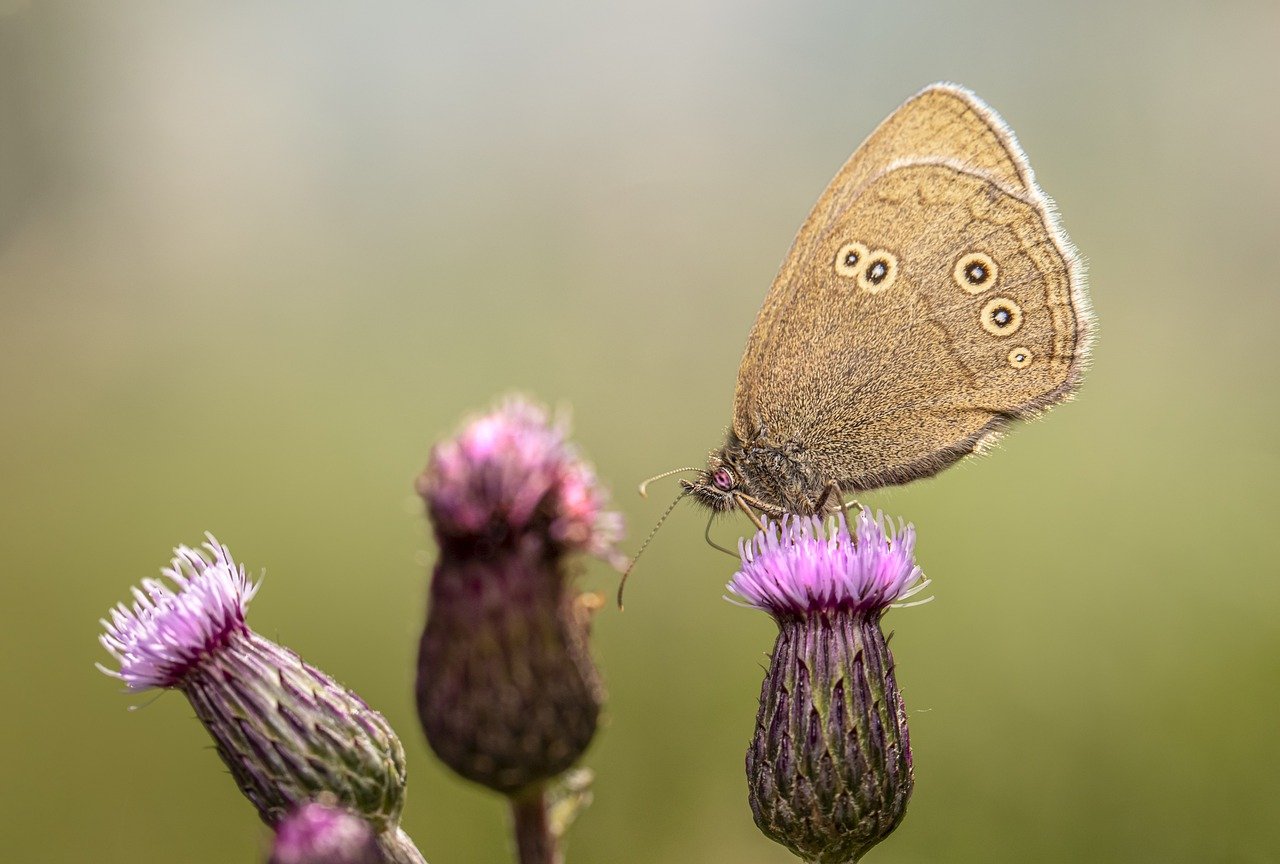Ringlet (Aphantopus hyperantus) is a common butterfly belonging to the family Nymphalidae, known for its distinctive dark wings adorned with ring-like eye spots. Here is a brief overview of this butterfly:
Description
- Appearance: The Ringlet butterfly has a dark brown to almost black coloration. The upper side of its wings is a deep, chocolate brown, often appearing velvety, and each wing typically features a series of small eye spots, or “rings,” which are its defining feature. These spots are more prominent on the undersides of the wings, where they are surrounded by a lighter brown or beige ring, making them easily recognizable.
- Wingspan: The wingspan of the Ringlet ranges from 42 to 52 mm, with females generally being slightly larger than males.
- Sexual Dimorphism: There is little difference between males and females in terms of coloration, but males may appear slightly darker due to denser wing scales.
Distribution and Habitat
- Geographical Range: The Ringlet is widespread across Europe, extending into Asia, from the British Isles to Japan. It is particularly common in central and northern Europe.
- Preferred Habitats: This butterfly thrives in a variety of habitats, including damp grasslands, meadows, woodland edges, clearings, and hedgerows. It prefers areas with tall grasses, as its caterpillars feed on them.
Behavior and Ecology
- Flight Period: The Ringlet typically flies from June to August, with its peak activity occurring in mid-summer. It is a relatively sedentary species, often seen fluttering low among grasses.
- Feeding Habits: Adult Ringlets feed on nectar from a range of wildflowers, such as bramble, thistle, and knapweed. They often feed with their wings closed, displaying the distinctive eye spots on the undersides.
- Larval Food Plants: The caterpillars feed on various grasses, including false brome (Brachypodium sylvaticum), cock’s-foot (Dactylis glomerata), and tufted hairgrass (Deschampsia cespitosa). The larvae feed primarily at night and spend the day hidden at the base of grass tussocks.
Life Cycle
- Reproduction: Females lay eggs singly or in small clusters on the leaves of grasses. The eggs are pale and turn yellow as they develop. They hatch in about two to three weeks.
- Larvae: The caterpillars are green with faint longitudinal stripes and a slightly forked tail. They undergo several molts and overwinter in the grass before pupating the following spring.
- Pupation: The pupa is formed low in the vegetation, suspended by a silken girdle. The chrysalis is greenish-brown with a distinctive shape, camouflaged against grass stems.
Interesting Facts
- Defense Mechanism: The eye spots on the wings serve as a defense mechanism to deter predators by confusing or startling them. When disturbed, the butterfly will quickly open and close its wings, creating a flashing effect that can startle birds or other predators.
- Adaptability: The Ringlet is highly adaptable and can survive in a variety of conditions. It can tolerate shade better than many other butterflies, which is why it is often found in woodland areas.
- Thermoregulation: Like many butterflies, the Ringlet relies on basking in the sun to regulate its body temperature. Its dark coloration allows it to absorb heat quickly, which is particularly useful in cooler climates.
Conservation Status
- Population: The Ringlet is currently not considered threatened and is listed as “Least Concern” on the IUCN Red List. However, its populations can be affected by changes in land management practices, such as the loss of damp grasslands or woodland clearings due to agricultural intensification or development.
- Conservation Efforts: Maintaining suitable habitats with a rich diversity of grasses and wildflowers, along with conservation of meadows and woodlands, is important for sustaining healthy populations of this butterfly.
The Ringlet (Aphantopus hyperantus) is a resilient and adaptable species, easily identifiable by its characteristic eye spots and dark brown coloration, which make it a fascinating sight in European and Asian landscapes during the summer months.
Visited 889 times, 11 visit(s) today
Views: 1570
Subscribe to the newsletter:
